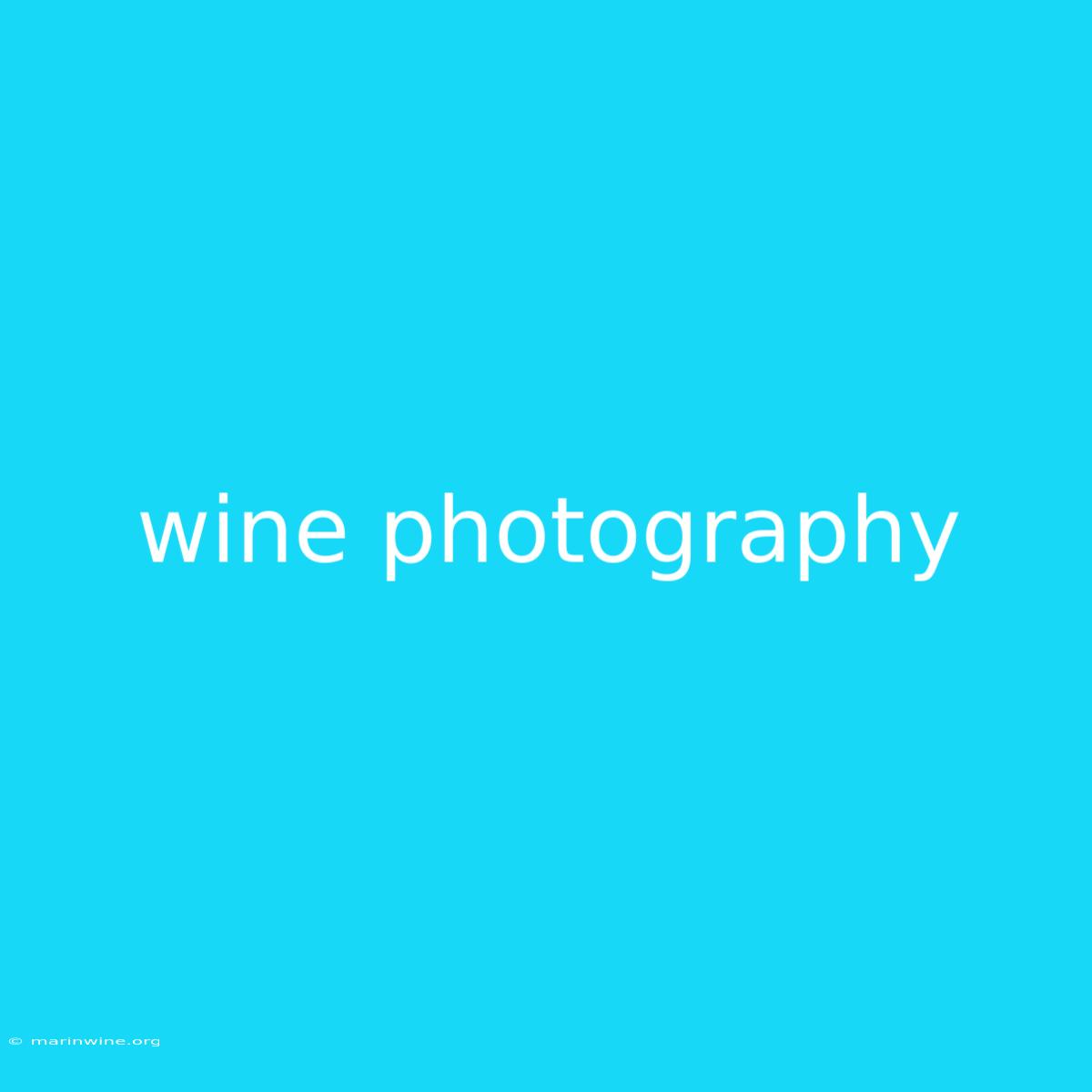Wine Photography: Capturing the Essence of a Sip
Have you ever wondered how wine photographers capture the alluring beauty of a glass of wine? It’s more than just pointing a camera and clicking. It’s about capturing the essence of the wine, its story, and the emotions it evokes. This article will explore the art of wine photography and provide you with insights to enhance your own shots.
Why It Matters
Wine photography plays a crucial role in marketing, branding, and communication. It visually conveys the quality, elegance, and experience of wine, influencing consumer perception and purchasing decisions. Whether for a winery website, a magazine spread, or social media content, stunning images can set your wine apart from the competition.
Key Takeaways of Wine Photography
| Aspect | Key Takeaway |
|---|---|
| Lighting | Natural light is preferred, but controlled lighting can create dramatic effects. |
| Composition | Rule of thirds, leading lines, negative space, and symmetry are key compositional elements. |
| Background & Props | Choose backgrounds and props that complement the wine's theme and story. |
| Focus & Depth of Field | Focus on the wine's details while creating a pleasing blur in the background. |
| Storytelling | Go beyond just the bottle and glass, tell a story with your images. |
Wine Photography: Uncorking the Art
Lighting: The Essence of Wine Photography
Lighting plays a vital role in bringing out the nuances of wine photography. Natural light is often favored, particularly the soft, diffused light of an overcast day. It brings a natural glow to the wine, highlighting its color and texture. However, artificial lighting can be used to create dramatic effects. Experiment with different types of lighting, including softboxes, reflectors, and LED lights.
Composition: Balancing Visual Elements
Composition is the art of arranging elements within the frame to create a visually appealing image. The rule of thirds is a fundamental principle, dividing the frame into nine equal squares and placing key elements along the intersecting points. Leading lines can draw the viewer's eye to the subject, while negative space creates a sense of balance and emphasizes the main element. Symmetry can create a sense of order and harmony.
Background & Props: Setting the Stage
Choosing the right background and props is essential for creating a cohesive image. The background should complement the wine's character and story. For example, a rustic wooden table might be appropriate for a traditional red wine, while a sleek marble countertop might be ideal for a modern white wine. Props can add a touch of personality to your images, such as a vintage bottle opener, a stylish glass, or a fresh bouquet of grapes.
Focus & Depth of Field: Capturing the Detail
Focus is crucial for showcasing the wine's details. Use a shallow depth of field to blur the background and bring the subject into focus. This creates a sense of depth and draws the viewer's eye to the wine. Experiment with different apertures to achieve the desired effect.
Storytelling: Beyond the Bottle
Wine photography is more than just capturing a bottle or a glass; it's about telling a story. Think about the wine's origins, its production process, and its taste profile. Consider using props that evoke the wine's personality and story. For example, a vineyard landscape could be used to depict a wine's terroir, while a winemaker's hands could illustrate the craftsmanship involved in its creation.
Wine Photography: Tips and Techniques
Tips for Wine Photography
- Use a Tripod: A tripod ensures stability and allows for longer exposure times, especially in low-light conditions.
- Use a Wide Aperture: A wide aperture (low f-stop number) will blur the background and focus on the wine.
- Experiment with Different Angles: Try shooting from different angles, including high, low, and overhead perspectives.
- Use Natural Light Whenever Possible: Natural light produces a soft and flattering glow.
- Pay Attention to Details: The smallest details, such as condensation on a glass, can add interest to your images.
- Edit Your Photos: Basic editing, such as adjusting exposure, contrast, and color balance, can significantly improve your images.
FAQ for Wine Photography
| Question | Answer |
|---|---|
| What kind of camera is best for wine photography? | A DSLR or mirrorless camera with a good macro lens is ideal. A smartphone camera can also be used, but the image quality may not be as high. |
| What are some good props for wine photography? | Vintage bottle openers, stylish glasses, grapes, corkscrews, wine barrels, vineyard landscapes, and even food pairings can be used as props. |
| How do I capture the color of the wine accurately? | Use a white balance setting that matches the lighting conditions. This ensures that the wine's color is represented accurately. |
| What are some common mistakes to avoid in wine photography? | Over-exposing the image, using a distracting background, focusing on the wrong part of the image, and using too much artificial light can negatively affect the final result. |
| What are some good resources for learning more about wine photography? | Online tutorials, workshops, and books can provide valuable insights into the art of wine photography. |
Summary by Wine Photography
Wine photography is a captivating art form that blends technical skills with creative vision. By mastering the fundamentals of lighting, composition, and storytelling, you can create stunning images that capture the essence of a wine and inspire others to experience its magic. Remember, the key is to tell a story with your images, evoking the emotions and experiences that wine can bring. Cheers to your next photographic adventure!

